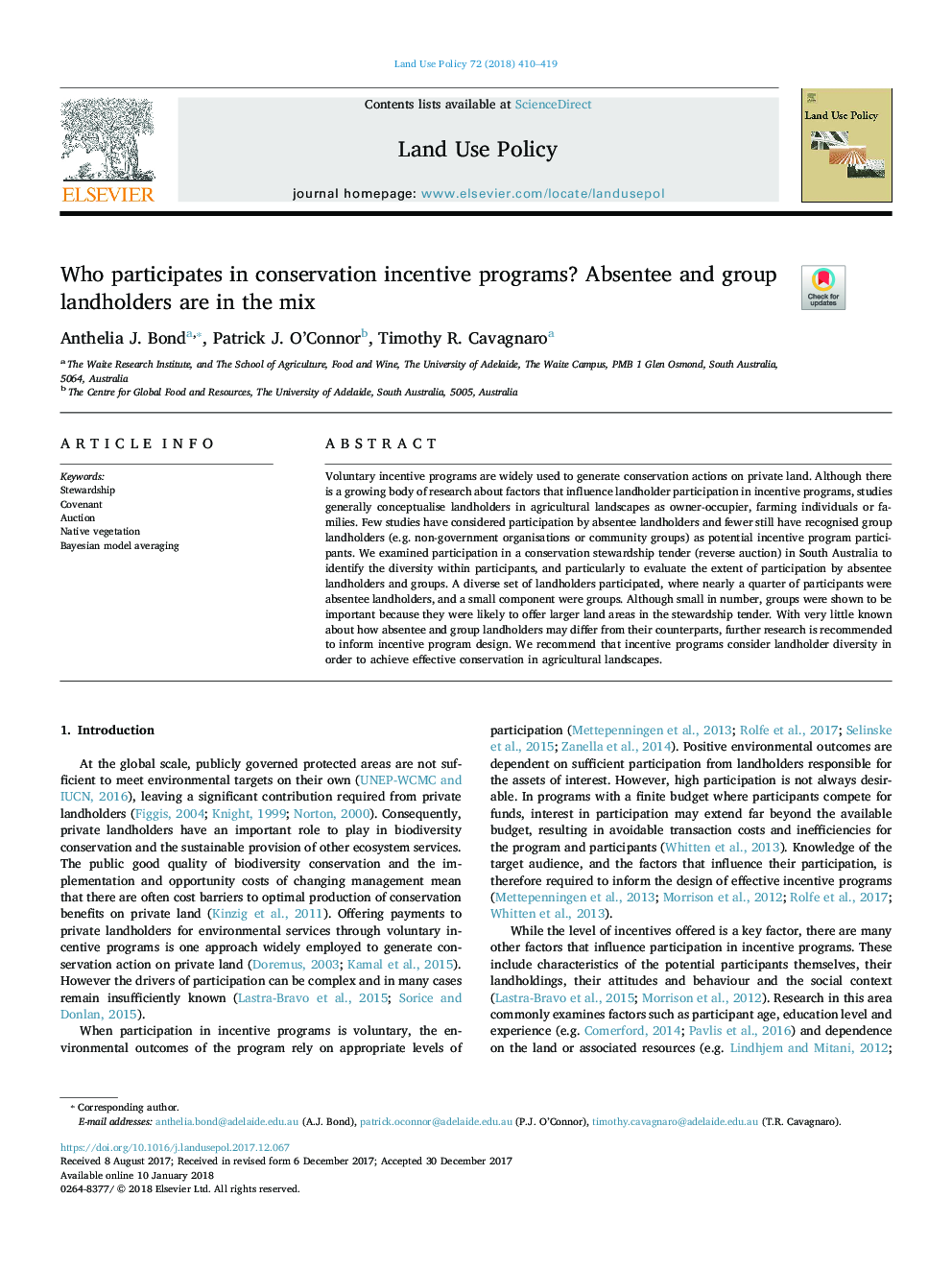| Article ID | Journal | Published Year | Pages | File Type |
|---|---|---|---|---|
| 6546671 | Land Use Policy | 2018 | 10 Pages |
Abstract
Voluntary incentive programs are widely used to generate conservation actions on private land. Although there is a growing body of research about factors that influence landholder participation in incentive programs, studies generally conceptualise landholders in agricultural landscapes as owner-occupier, farming individuals or families. Few studies have considered participation by absentee landholders and fewer still have recognised group landholders (e.g. non-government organisations or community groups) as potential incentive program participants. We examined participation in a conservation stewardship tender (reverse auction) in South Australia to identify the diversity within participants, and particularly to evaluate the extent of participation by absentee landholders and groups. A diverse set of landholders participated, where nearly a quarter of participants were absentee landholders, and a small component were groups. Although small in number, groups were shown to be important because they were likely to offer larger land areas in the stewardship tender. With very little known about how absentee and group landholders may differ from their counterparts, further research is recommended to inform incentive program design. We recommend that incentive programs consider landholder diversity in order to achieve effective conservation in agricultural landscapes.
Related Topics
Life Sciences
Agricultural and Biological Sciences
Forestry
Authors
Anthelia J. Bond, Patrick J. O'Connor, Timothy R. Cavagnaro,
